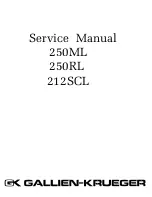
3
Front / Rear Panel Description
Front Panel
1.
Amplifier ON / OFF switch
2.
VSWR LED display
3.
Protection LED indicator
4.
TX indicator LED
5.
Manual band filter select down
6.
Manual band filter select up
7.
Active band filter indicator
8.
Output power indicator 0-100%
Rear Panel
9.
13.5V DC Power supply input connector (Polarity marked on rear panel)
10.
20A Input Fuse, Blade / Auto type
11.
RTX Input SO239 connector (Connect to transceiver)
12.
PTT input RCA/PHONO connector. Active low, (ground to switch amplifer to transmit)
13.
Antenna SO239 Connector , Connect to suitable antenna or ATU / Antenna
4
Introduction:
The MLA100 is a wideband HF & 6m amplifier capable of 100W HF, (80W 6m), output from
5W input drive, suitable for any of today’s QRP transceivers. It features automatic / manual
band selection, rapid switching between receive and transmit by PIN diode RF switching,
making it suitable for all modes of narrow band modulation and QSK operation. Both output
power and antenna VSWR are displayed on the front panel by dual LED bar graph displays.
The amplifier is protected against excessive temperature, antenna VSWR and input overdrive.
Installation:
Unpack the amplifier from it’s shipping carton and inspect for any signs of damage. The ampli-
fier should be installed (base or mobile installation), in a place that allows good ventilation and
provides a suitable base to support it. Failure to allow for reasonable ventilation will cause the
amplifier to overheat and shutdown prematurely. A short 50 Ohm patch lead should be used to
connect the amplifiers RTX SO239 input
e
connector to the output, (Antenna socket ), of the
Transceiver. This length of this cable is not critical but should be of good quality and be kept as
short as practically possible. The ANT output
g
connector of the amplifier should then be con-
nected to the antenna being used. (If an external ATU/SWR/Power meter is required, the ampli-
fier should be connected to the input and then the antenna to the output of this device, This or-
der of connection is very important. Check also that the Antenna is suitably rated for the power
output level. (Antenna SWR should not change much from low to high power). The antenna
should be tuned before switching on the power amplifier. In SSB / CW mode the PTT input
c
should be connected to the transceiver PTT output . This ensures that there is minimum delay
when the transceiver is put into TX. For transceivers without a PTT output the amplifier will
still function correctly however there will be some additional delay as the amplifier will only
switch to TX when there is RF present on the input. There is a predetermined delay, (0.5-1S),
set for SSB, so that the amplifier remains in TX between pauses in speech.
The amplifier must be connected via the input power connector
\
to a suitable power supply of
the correct voltage output and sufficient current rating. The output should be between 13.5 or
13.8V DC but the amplifier may be connected to a supply from 12V to 14V DC without dam-
age. The current rating of the power supply must be at least 25A continuous. Be aware that the
current rating must be greater still if the drive radio is also connected to the same power supply,
although this is not generally advised.
The voltage output and current rating are very important for low voltage (12V) RF transistors as
voltage sag, (poor load regulation) or insufficient current capability can drastically reduce the
output power or cause distortion. If full output is not seen then the first thing to check is that the
voltage remains above 12.5V at full load. Anything less indicates the power supply is not suit-
able for the amplifier at full output.
The cross sectional area of the cables used to connect the amplifier to the PSU should not be
less than 6mm
²
or 10 AWG
.
They should also be kept as short as practicably possible to avoid
voltage drop due to ohmic losses. This is less of a problem in a fixed installation where the
power supply may be placed close to the amplifier.
























